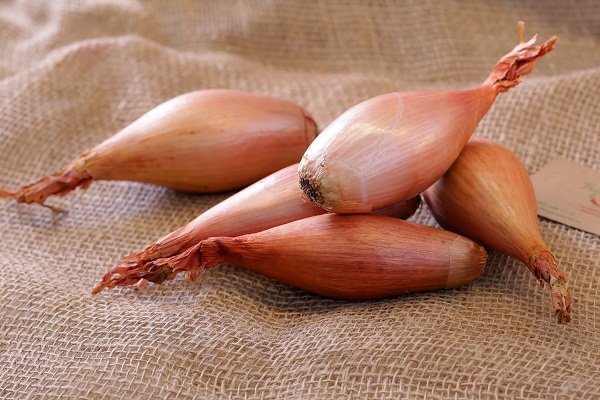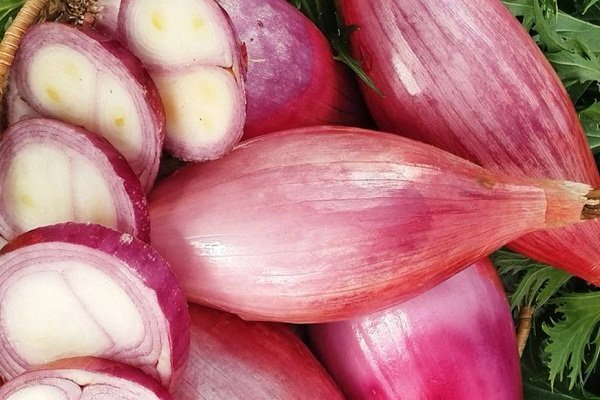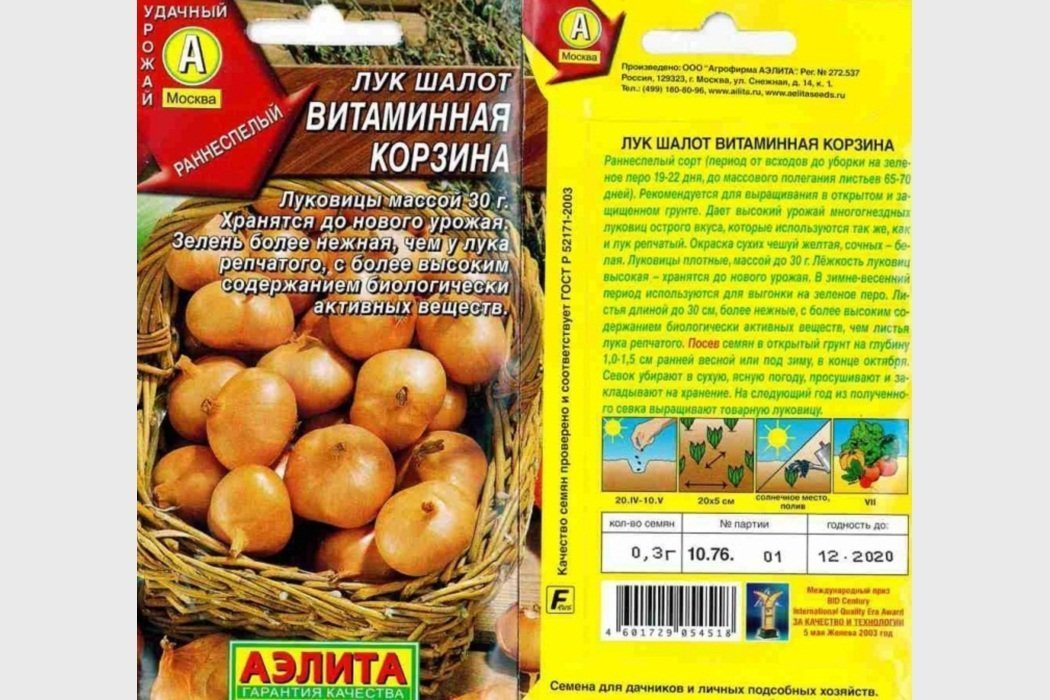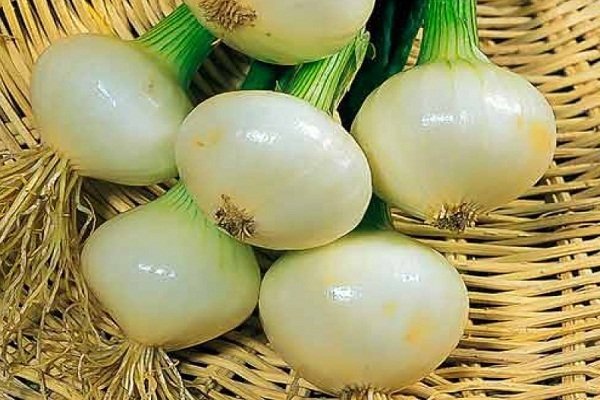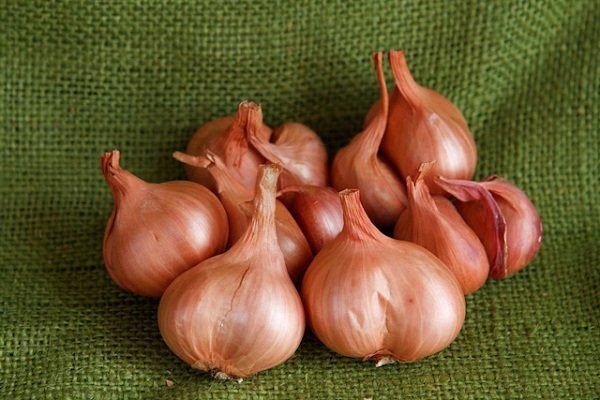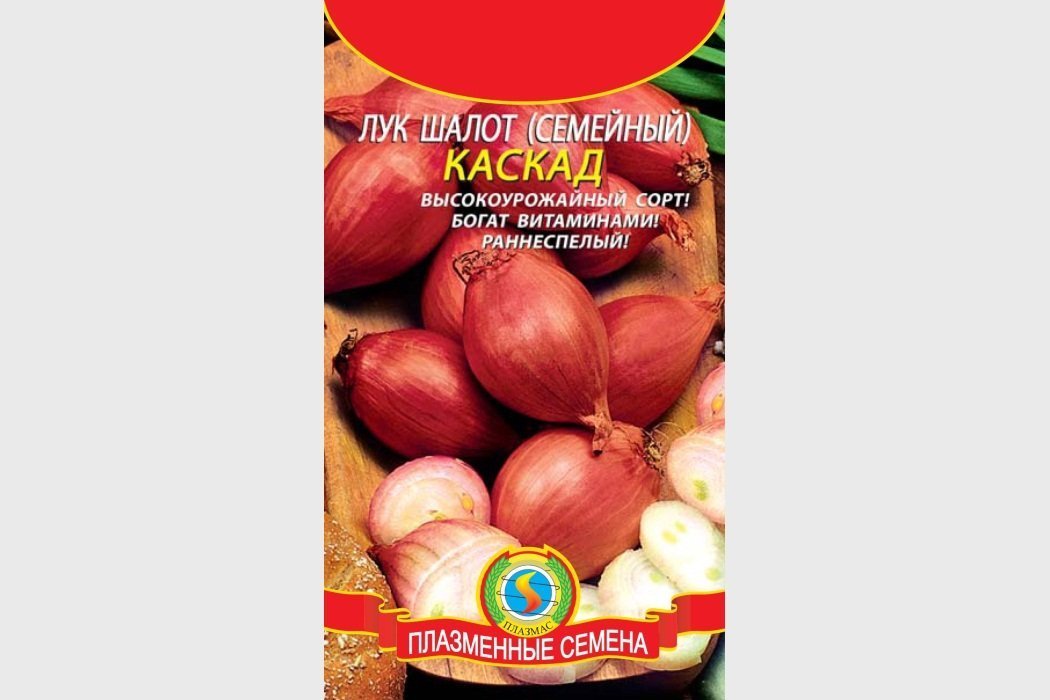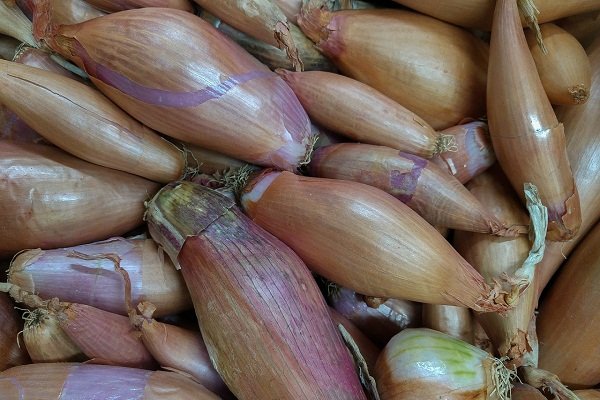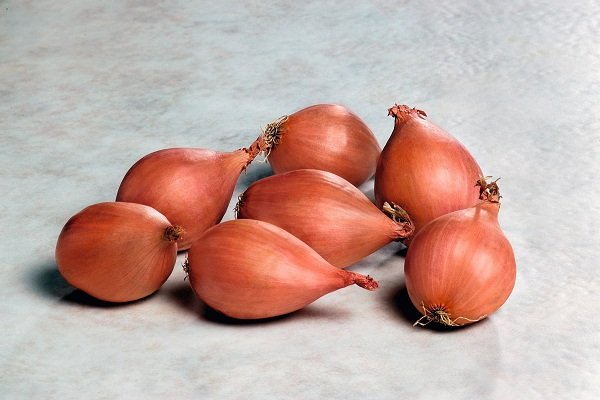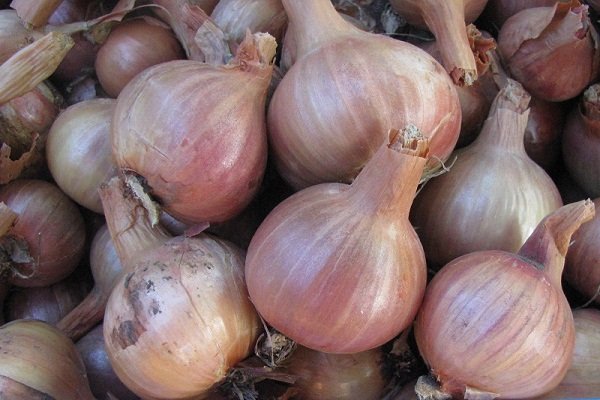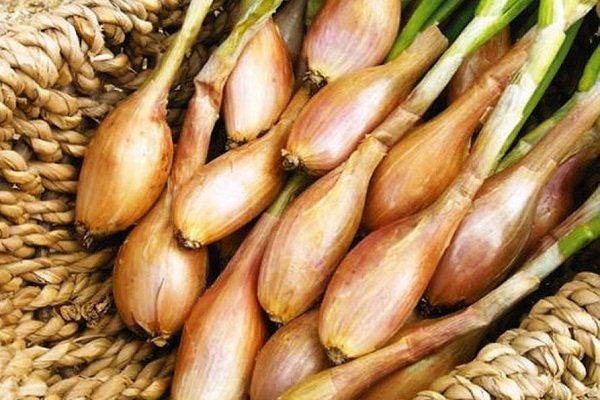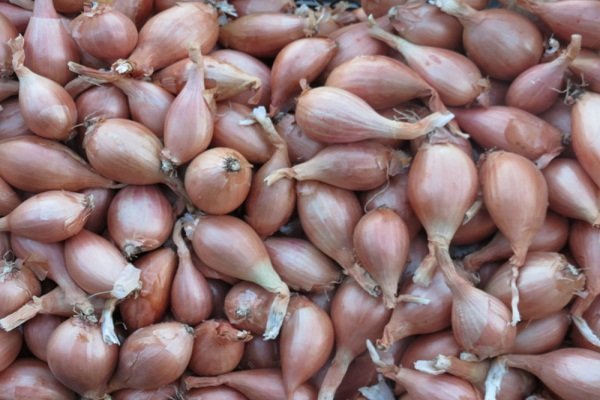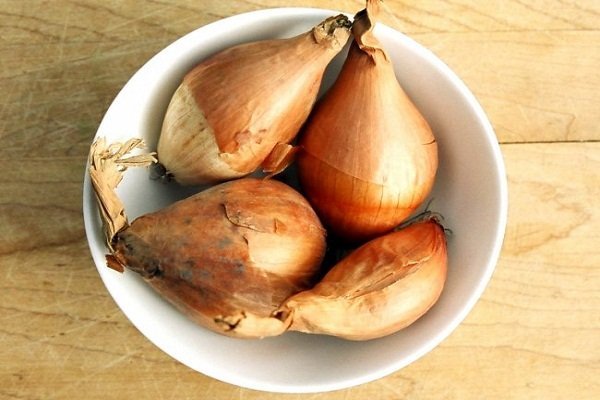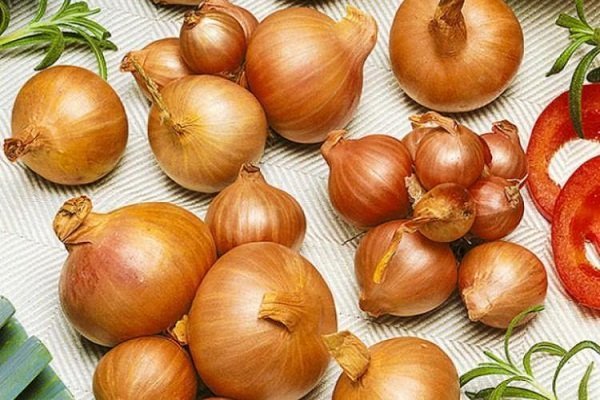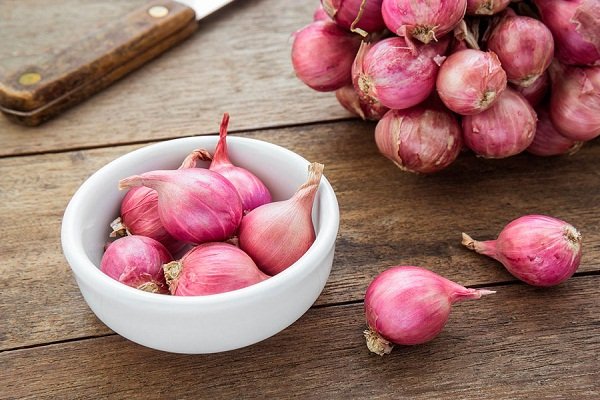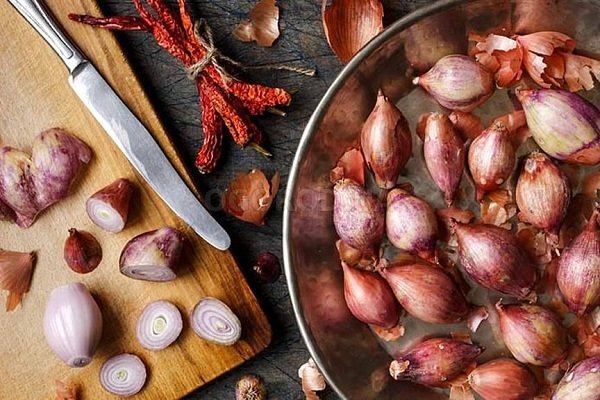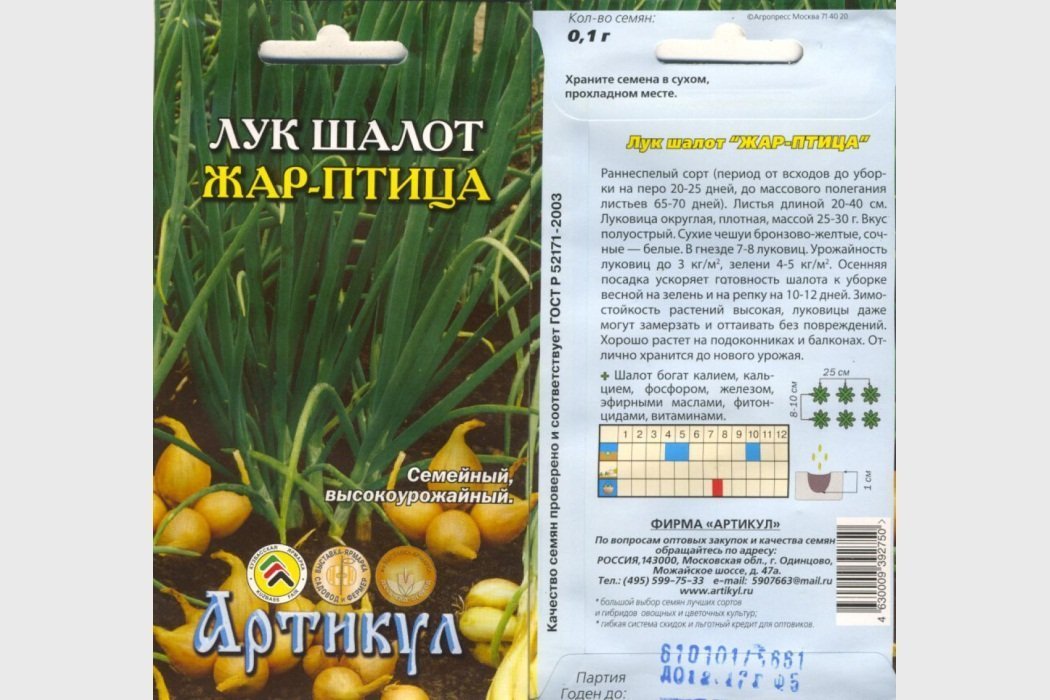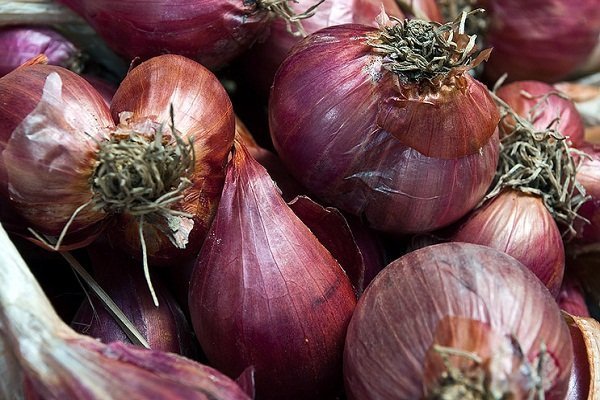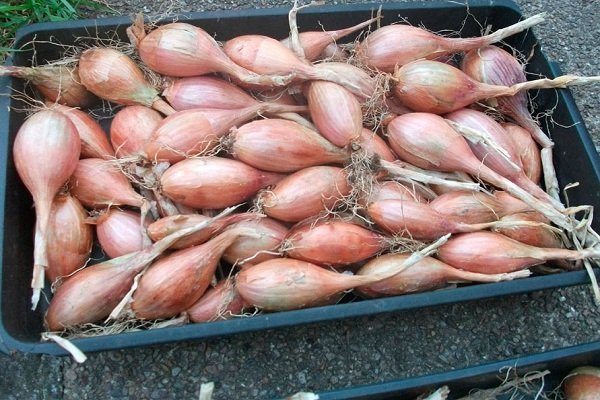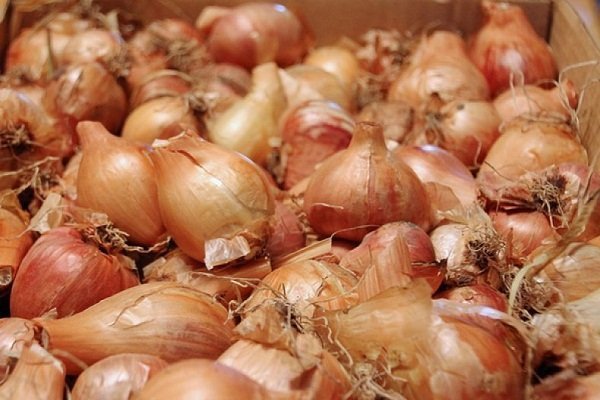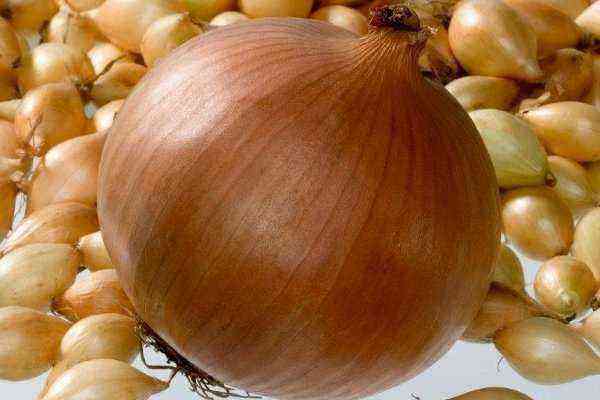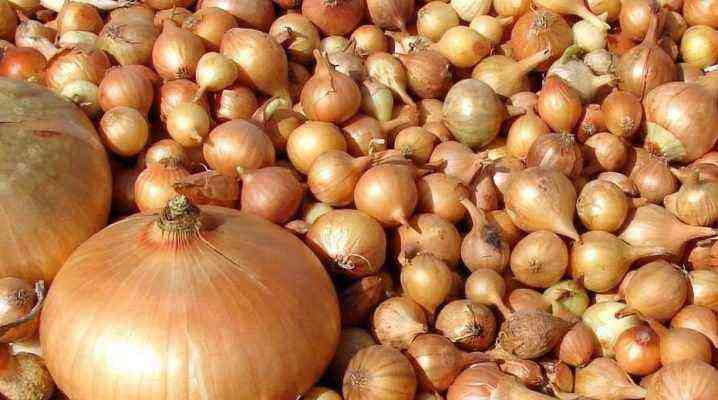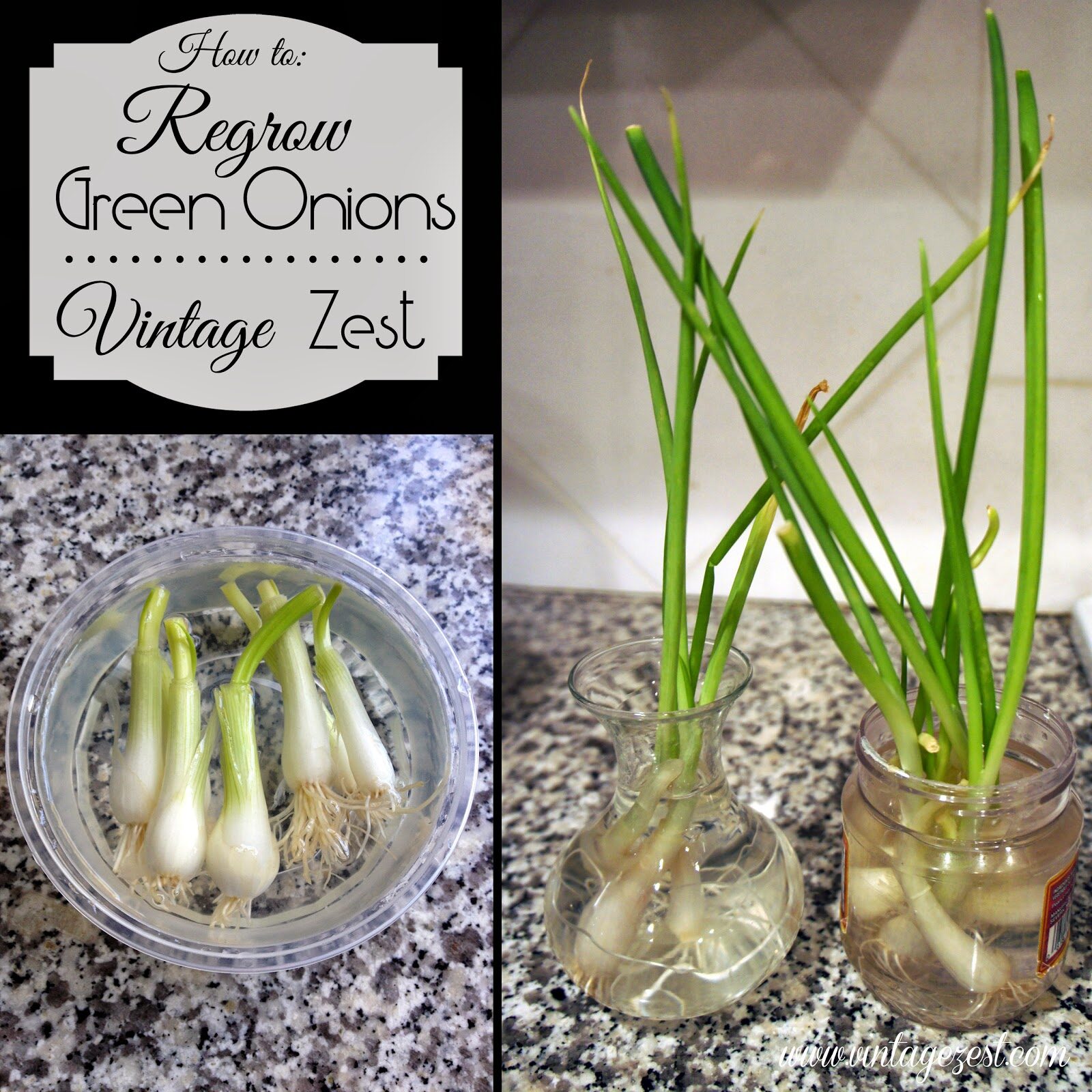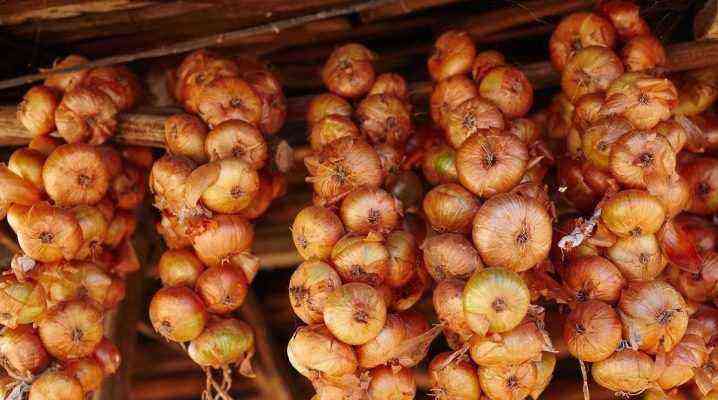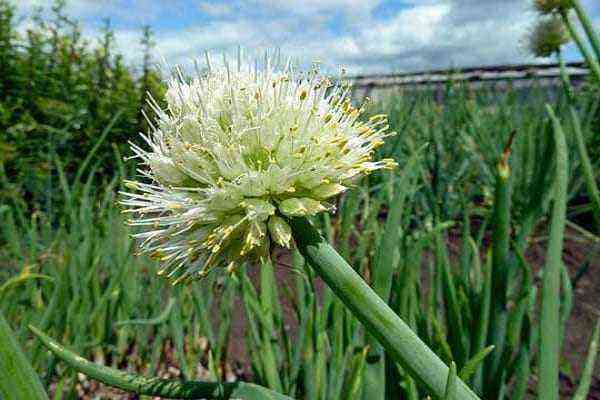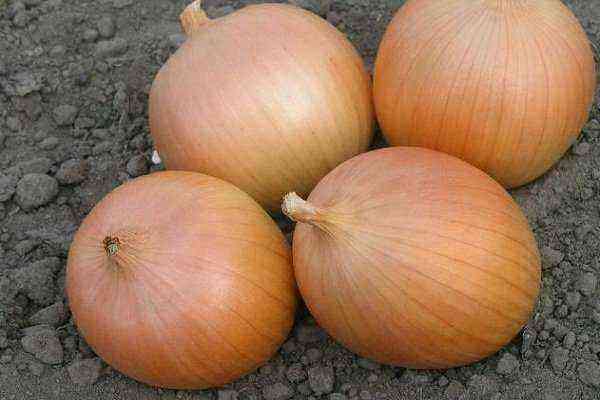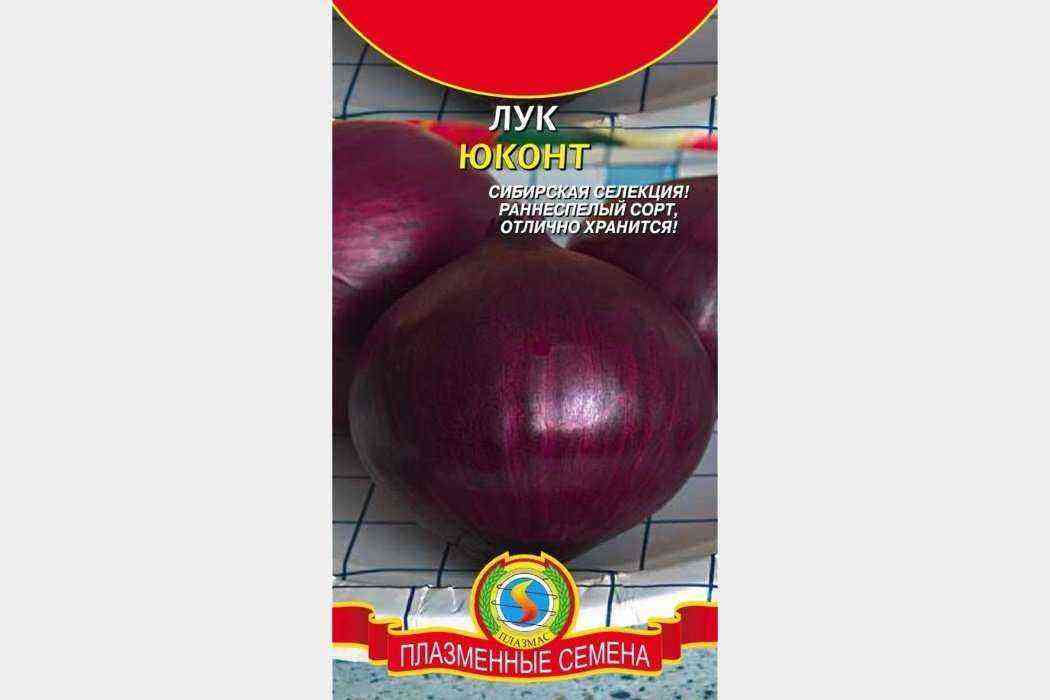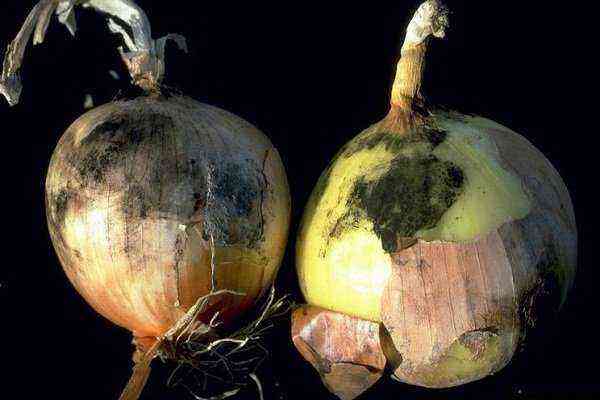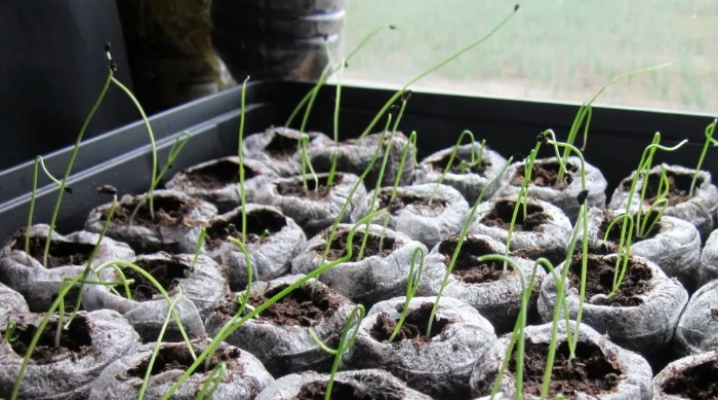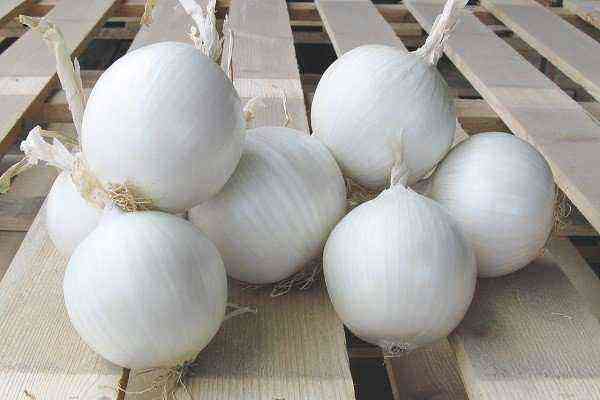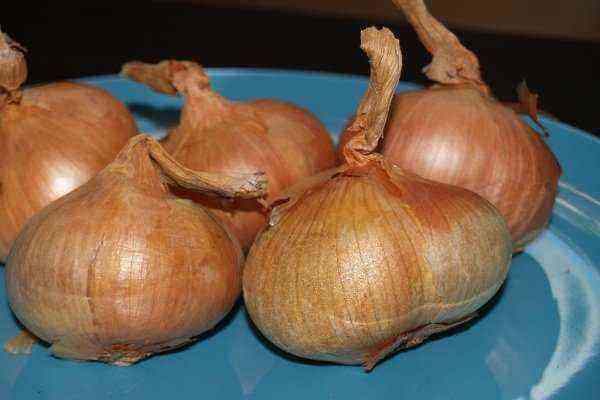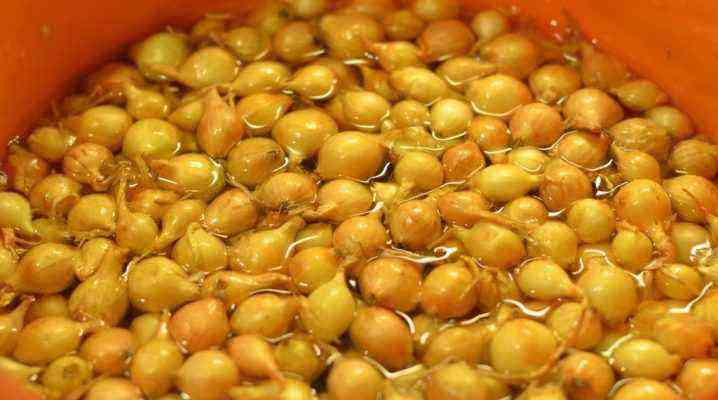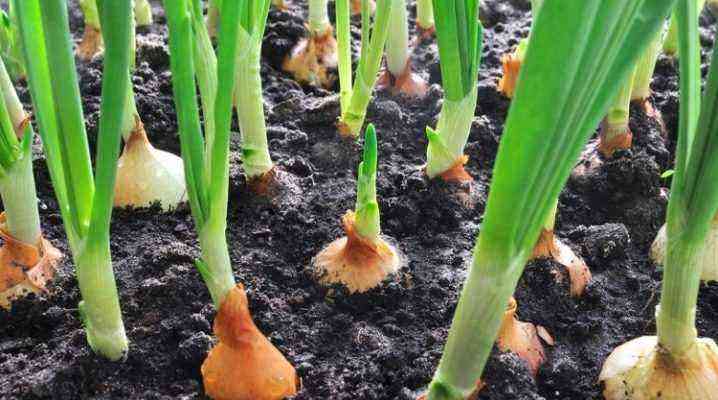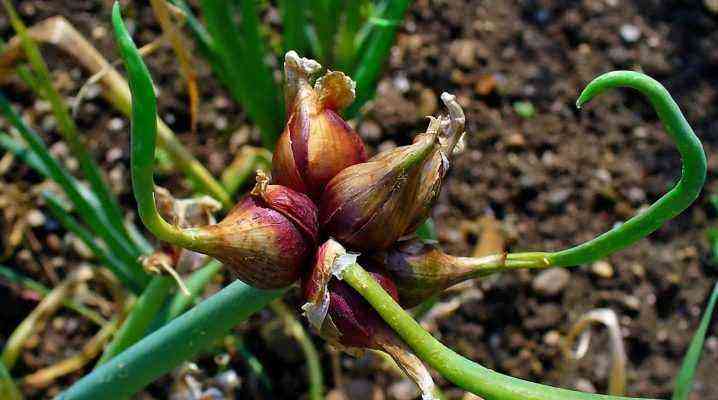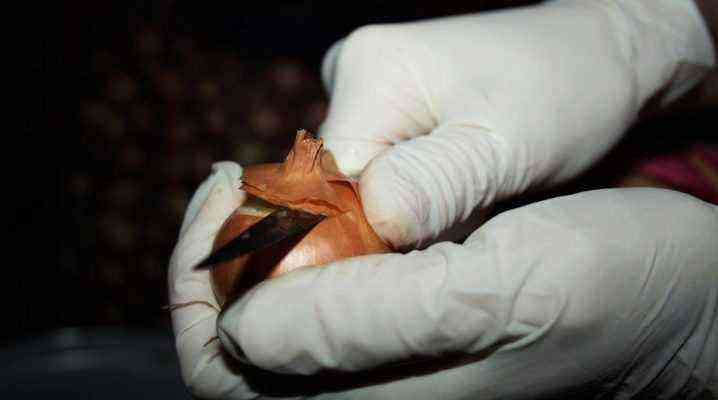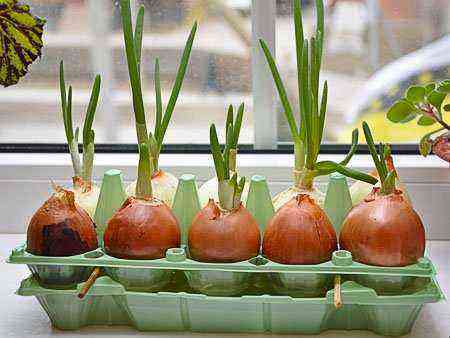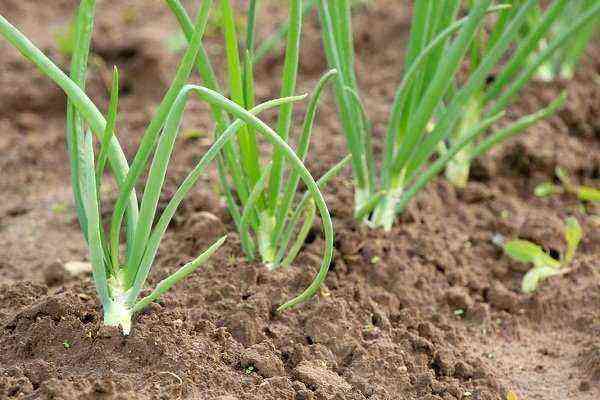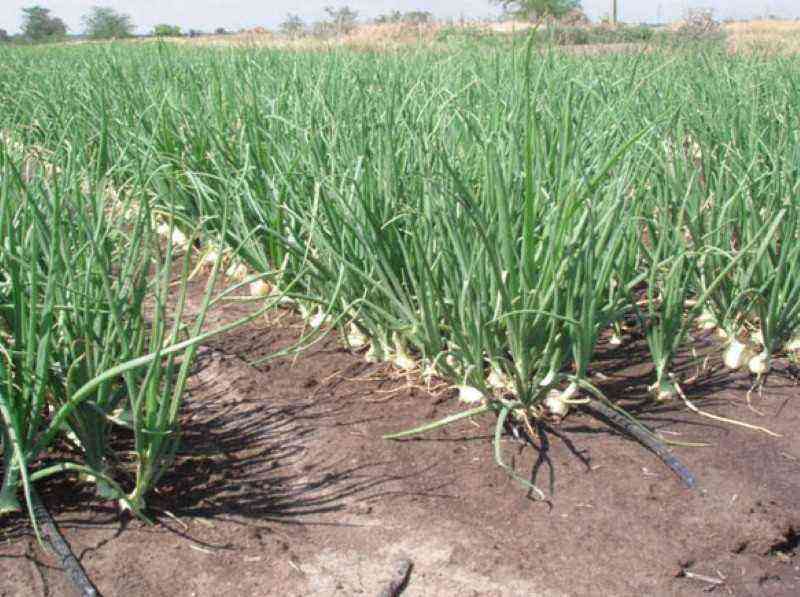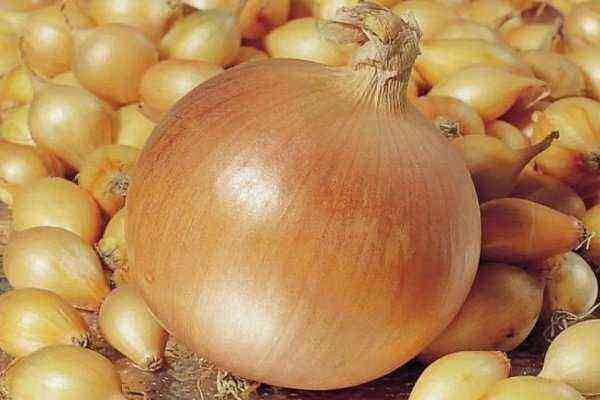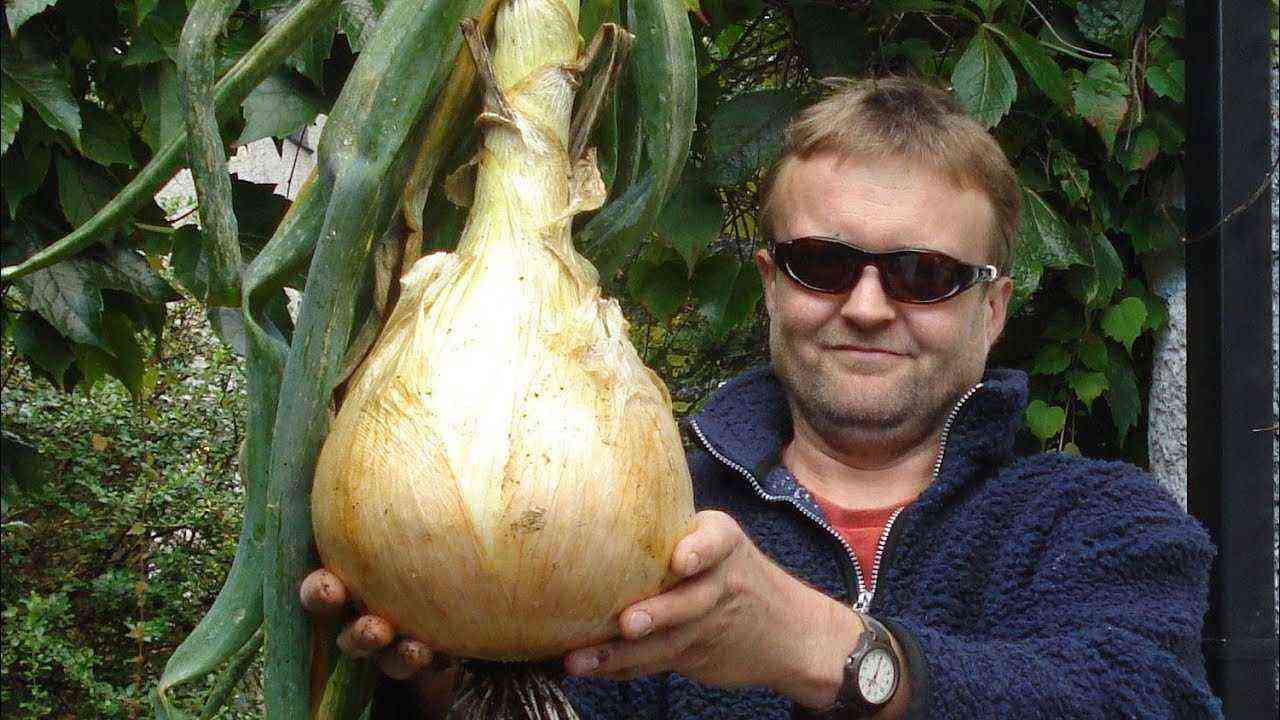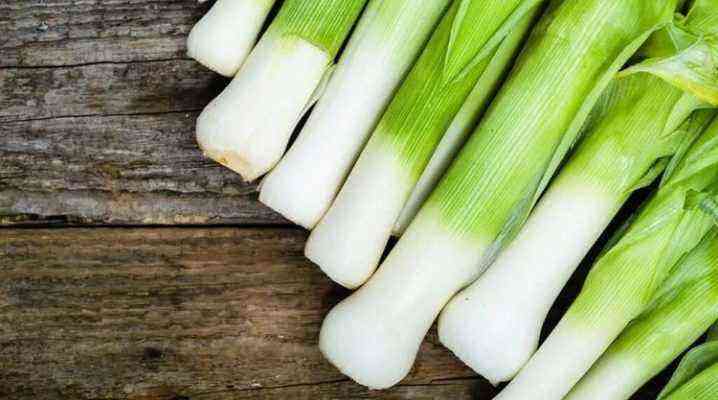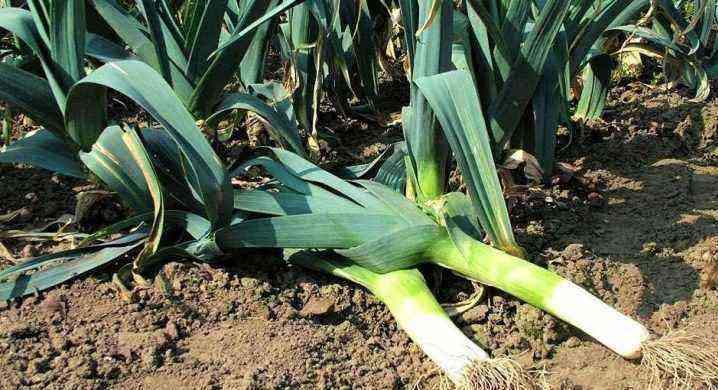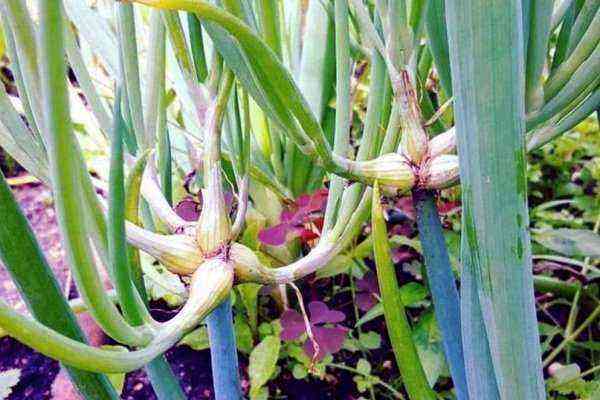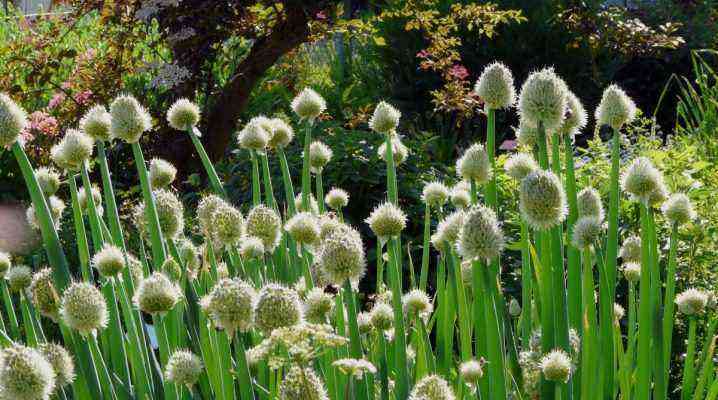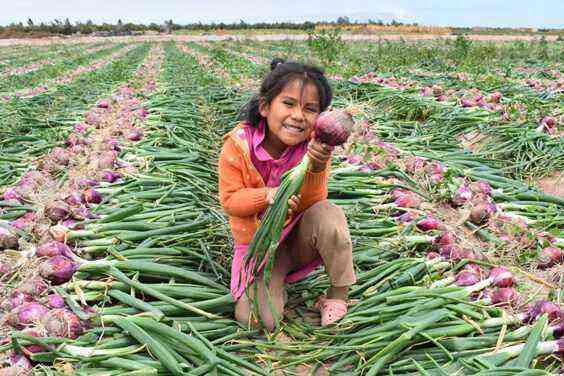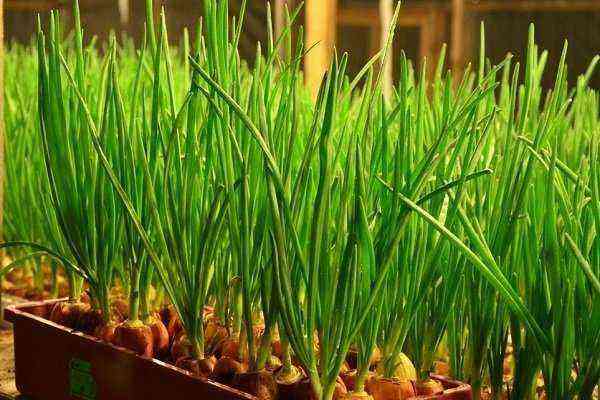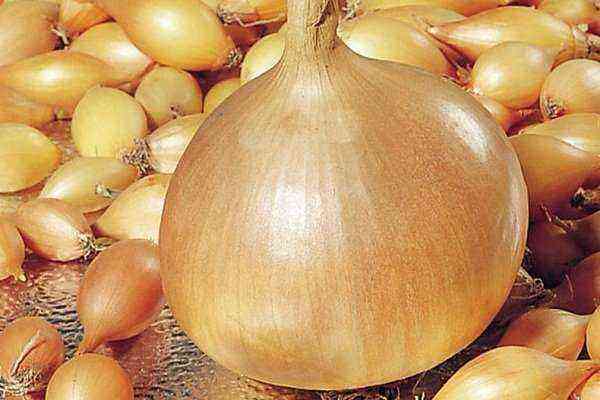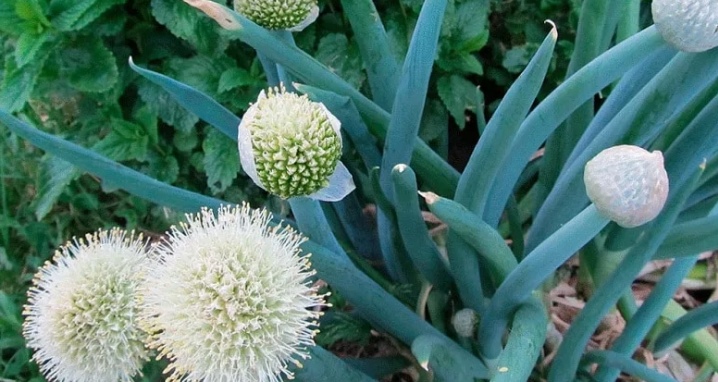A delicacy representative of the Onion family is the shallot, a biennial herbaceous plant that, when ripe, acquires many small slices, which resembles garlic. It belongs to the types of onions, however, it differs not only in external qualities, but also in taste. What is a shallot, and how to cultivate it in a personal plot, we will find out further.
Description of shallots
The early-ripening shallot is a biennial plant, which has been mentioned since the 3rd century BC. Nowadays, it is especially popular in France and is beginning to actively take up more space on the shelves around the world. The characteristics of the plant, which all gardeners should know about, are presented in the table below:
| Parameter | Description |
| Origin | The origin of this plant has not been precisely established. The first mention of it was found in the works of Theophrastus (372-287 BC). There is a theory that for the first time they began to eat it about 5 thousand years ago in the south-west of Israel, and more precisely in the city of Ashkelon. For this reason, it is also called the Ashkelon onion (Allium ascalonicum). According to other sources, shallot comes from Asia Minor. Some experts believe that he comes from the Mediterranean region. It is believed that the plant came to Central Europe from Greece in the 13th century thanks to the crusader knights. In the CIS countries, shallot first appeared in 1958, when it was bred by breeders from the Kuban and Kharkov regions. |
| Cultivation areas | The most favorable areas for the cultivation of shallots are the southern territories. In practice, it is actively planted not only in Western Europe, but also in Ukraine, Moldova, the North Caucasus and Transcaucasia. Some vegetable varieties are acclimatized and suitable for cultivation in the northern regions. These varieties include Bonilla, Seryozhka and Red Sun Shallot. |
| Growing period | The culture is suitable for growing throughout the year. In spring and summer, you can cut off fleshy feathers with a waxy coating and a pleasant taste, and in autumn and winter you can pick onions directly. |
| Germination method | Bulbs grow at the same time, forming a kind of nest of small heads. On one plant there are from several pieces to several dozen heads. Due to this feature, the bow is also called family or nesting. Its other name is magpie. Each head weighs approximately 200-300 g. The height of the arrows, on which loose umbellate inflorescences appear, reaches about 100 cm. They also include flowers that do not have decorative value. |
| Fruit Characteristics | The main vegetative organ of the plant is a small bulb, which has the following characteristics:
|
| Planting material | Shallots are often grown by planting heads, so it is not necessary to sow seeds in sets to get good planting material. So, you just need to leave part of the crop for planting next season. For this feature, the onion is also called potato. However, with vegetative propagation, it must be taken into account that after some time the onions lose their varietal qualities and gradually accumulate diseases, which negatively affects the yield. To fix this, you need to use fresh material for planting or grow sets yourself from seeds that remain viable for 2-3 years. In the first year, they will produce heads that resemble garlic and break up into 5 bulbs. When planted already at the beginning of the next season, you can get nests consisting of numerous bulbs. |
| The benefits of onions | Shallot is valued for its medicinal properties – it helps with diseases of the gastrointestinal tract and eyes, does not injure the gastric mucosa due to its delicate taste, produces an anti-inflammatory effect and prevents the development of tumors due to the content of flavonoids. Onions are also useful in content:
|
| Cooking application | In cooking, both bulbs and feathers are used. They are used fresh, fried, baked and pickled. In Iran, it is customary to serve an original sauce for barbecue – grated shallots with yogurt, and in China popular chips are made from it. Shallots are especially popular in France, where they are used to make most sauces, delicacies, and dishes with poultry and wild animals. |
| Противопоказания | In large quantities, shallots should not be eaten with problems with the gastrointestinal tract and urinary system, as it can make it difficult to urinate. It is recommended to completely exclude it from the diet for bronchial spasms, diseases of the kidneys and liver. In addition, onions are contraindicated in people with high acidity of the stomach – it increases the level of acid and thereby causes irritation of the mucous membrane. |
The secrets of shallots are described in the following video:
Differences from onions
Shallots resemble regular onions in that they have a fleshy head, long green feathers, and a two-year growing season. However, there are differences between these two cultures, and they are as follows:
- shallots grow in nests, and onions grow singly;
- the shallot head consists of several cloves, which resembles garlic and differs from onions, which in the context consists of concentric rings;
- shallot has a more tender and pleasant pulp, but the aroma is not as sharp as that of its relative;
- shallots are able to withstand lower temperatures and ripen much faster than onions;
- shallot heads can be stored even at room temperature, but onions are more picky about storage conditions and fade quickly;
- in the composition of shallots, sugar content predominates, so it has a high calorie content per 100 g – 72 kcal versus 40 kcal for onions.
Popular varieties
There are many varieties of shallots on the market, which can be classified into three groups according to their maturity. We will consider each of them separately.
Early
These include varieties, the green feather of which ripens in 18-22 days, and the leaves lie down 65-70 days after emergence. Popular early varieties are:
- vitamin basket. An excellent option for growing both in the greenhouse and in the open field. Bulbs weighing up to 30 g have a husk with a yellow color and a juicy crispy white flesh.
- Emerald. Brings bulbs of a rounded shape and weighing 20-30 g. They are covered with a brown-pink husk and have a white semi-sharp flesh. 4-5 bulbs grow in the nest. From 1 sq. m plot, you can collect 1,2-1,4 kg of fruit. Their shelf life is up to 10 months.
- Snowball. The bulbs are egg-shaped, gain up to 35 g in mass and acquire a spicy taste. From 1 sq. m beds can be harvested up to 1,9 kg of crop. The fruit will keep for up to 7 months.
- Sprint. Downy mildew resistant variety that can be harvested as early as the end of July. Great for green growing. The bulbs themselves are obtained by 20-35 g. They have a sharp flesh of a light yellow color with a pink tint.
- Belozerets 94. Bred in the Krasnodar Research Institute of Agriculture named after P. P. Lukyanenko. The variety is valued for its good keeping quality and high yield (up to 15 tons per 1 hectare). The fruits are formed oval-round or rounded, weigh an average of 21-27 g and have a sharp juicy pulp of a lilac-violet color. The bulbs are covered with a pale lilac husk with a yellowish tint.
- Cascade. It bears fruit with bulbs weighing up to 35 g, which have a wide ovoid shape, juicy pulp and light pink husks. In each nest, 5-6 such bulbs are formed. From 1 hectare it will be possible to collect 17 tons of fruits.
- Family. If you are looking for a variety that is resistant to frost and disease, then this is a great option. The plant produces rounded bulbs weighing 22-25 g. They are covered with a brownish-yellow husk with a purple tint and have white flesh with a mild semi-sharp taste. In one nest, 3-4 such fruits appear. They are great for salads and vegetable dishes.
- Sir-7. It was bred by breeders from SibNIIRS, therefore it is suitable for cultivation in the northern regions. The variety bears fruits weighing about 20-35 g, which have yellow scales with a pink tint and a sharp taste. From 4 to 7 bulbs appear in each nest. From 1 hectare it will be possible to collect about 18 tons of fruits.
- Star. One of the most early maturing plants – forms a mature onion in 55-60 days. Bulbs with yellowish-pink scales and white flesh have a sharp taste and are not afraid of drought.
- Off-season. In winter and spring, this particular variety can be grown for greens. The plant forms bright green leaves up to 30 cm long and rounded flat fruits weighing up to 20 g. Their scales are yellow, and the inner lobules are white. 8-10 fruits appear in the nest.
The middle-ripening
This group includes varieties that take about 70-80 days from germination to lodging of greenery. These include:
- Albic. Brings yellow bulbs of a rounded flat shape and weighing up to 20-30 g. The heads and feathers have a pleasant semi-sharp taste, therefore they are suitable for adding to fresh salads and vegetable dishes. From 4 to 8 bulbs appear in one nest, and the yield per 1 hectare reaches 20 tons.
- Ayrat. Onions with a sharp, but at the same time delicate taste, which is often grown for greens. Rounded heads have a yellow or orange husk and weigh an average of 15 g. Up to 5-6 bulbs are formed in one nest, and from 1 sq. m beds can be harvested up to 1,5-5,7 kg of crop.
- Andrey. Semi-sharp onion with pink juicy flesh and dark brown skin. The heads have a transverse-elliptical shape and weigh 25 g each. Productivity per 1 sq. m – up to 1,8 kg.
- Afonya. A semi-sharp variety that bears fruit in broadly egg-shaped bulbs weighing up to 30 g. They are covered with dark red scales and have juicy reddish slices. In one nest, 4-5 heads are formed, and from 1 square. m manages to collect 2 kg of onions.
- Bonilla F1. A one-year-old hybrid, the cultivation of which often occurs through seeds in order to obtain greenery. Bulbs are obtained weighing up to 32 g, have an oblong-rounded shape, yellow-brown dry scales and a semi-sharp taste. Each nest consists of 4-5 bulbs, and from 1 sq. m manages to collect up to 1,5-1,6 g of the crop.
- Guarantee. The plant brings bulbs of a rounded flat shape and weighing up to 25-32 g. They have a brown husk with a grayish tint and brown flesh of a mild semi-sharp taste. The variety can be grown on heads and greens. From 1 sq. m beds will be able to collect 1,5-2,4 g of a crop suitable for consumption for table purposes and for conservation.
- Miner. The variety brings semi-sharp bulbs of yellow color, rounded shape and weighing 16-18 g. 5-7 heads are formed in one nest, and the yield per 1 square. m – about 1,5 kg.
- Guran. A perennial plant that bears fruit with bulbs with a medium-sharp taste, round shape and weighing up to 26-28 g. They have a brownish-gray, brown or light orange husk. 5-6 daughter bulbs appear in each nest, and the yield per 1 sq. m reaches 1,7-2 kg.
- The Kuban yellow D-322. The variety was released by breeders of the NTsZ im. P. P. Lukyanenko and zoned since 1958. In each nest it forms 4-5 bulbs, which have an oval-flat shape, weight up to 25-30 g, brownish-yellow husk and juicy semi-sharp flesh of white or pale green color. Productivity per 1 hectare – from 16 to 28 tons.
- Kushchevka Kharkiv. A variety of universal table destination, which in each nest brings 6-7 oval-shaped bulbs and weighing up to 25-30 g. They have yellow-brown scales with a purple tint and juicy light purple flesh with a semi-sharp taste. The variety is not afraid of low temperatures and endures the lack of moisture in the soil.
- Earring. Multi-germ plant, which is grown from sets in a two-year culture. The bulbs are round, dense and weigh up to 25 g. They have yellow scales and juicy white flesh. They can be stored up to 8 months.
- Sophocles. A productive variety that grows well on any soil and is resistant to Fusarium. In each nest, 4-8 bulbs are formed weighing from 25 to 50 g. They have a red or brown-red coating and a purple core with a spicy taste.
- Ural purple. Unlike other varieties, it has especially large nests – 15 bulbs are formed in each of them. They have an oval-flat shape, weighing up to 25-40 g and a semi-sharp or sweetish taste. The outer scales are purple-brown in color, and the inner lobules are pink. The plant does not produce shooters and is resistant to rot.
- Chapaevsky. A versatile variety that produces 3 to 8 bulbs in each nest. They have a round-flat or rounded shape, dry scales of light purple color and the same semi-sweet flesh in taste. Each bulb weighs 40 g.
- Firebird. A variety with a semi-sharp taste that bears fruit in round-flat bulbs with dry yellow-brown scales and a weight of 25 to 30 g.
late ripening
Varieties with a growing season of approximately 80-95 days. Popular among them are:
- Vonsky. This variety can be grown in adverse conditions, as it is resistant to temperature changes, pests and diseases. In one nest, 3-4 bulbs may appear, each of which weighs approximately 30-70 g, has a red husk and white flesh with a light purple tint and a semi-sharp taste.
- Kunak. Another variety with a semi-sharp taste, bred at the Krasnodar Research Institute of Agriculture. P. P. Lukyanenko. In each nest, 3-4 rounded-flat or rounded bulbs appear, which have a yellow husk and white flesh. From 1 sq. m plot, you can collect about 3 kg of greens and 2,6 kg of onion fruits.
- Mighty. This variety is not afraid of putrefactive lesions and only rarely produces arrows. In one nest, 4-5 bulbs are formed, each of which weighs 23-52 g, has pink scales and pale purple juicy flesh with a semi-sharp taste. From 1 hectare you can collect 17 tons of fruits, perfect for pickling. The variety is suitable for winter planting.
- Siberian amber. The plant endures cold and is not afraid of putrefactive diseases. In each nest it forms up to 5-8 onion cloves for table purposes, which have white flesh with a semi-sharp taste, are covered with orange or yellow scales and weigh 28-30 g. From 1 sq. m beds can collect up to 2 kg of fruit.
- Мернеульский (Баргалинский). Unlike the above plants, this variety produces large bulbs – weighing from 50 to 90 g. They have an elongated oval shape, yellow-pink husks and juicy white flesh. In one nest grows 4-5 bulbs.
When to plant?
Depending on the purpose of cultivation, the timing of planting shallots may vary:
- In the autumn. To obtain an early harvest of onion feathers, it is recommended to plant onions before winter, that is, in autumn – in the middle or end of October, since the culture is not afraid of frost. It should be borne in mind that from the moment of planting until the onset of persistent cold weather, about a month should pass so that the plant has time to take root, but has not yet begun to grow. This planting will speed up the harvesting period by 2 weeks.
During winter planting, feathers can be cut as early as April, and heads can be harvested in June. In order to have vitamin greens on the table even in winter, the bulbs must be planted for distillation at room conditions.
- In the spring. To grow full-fledged heads, shallots need to be planted in late March – early April. To determine the most favorable time for planting, it is worth focusing on weather conditions – the soil should warm up to 8-10 ° C. Under such conditions, the plant will be able to saturate with a large volume of melt water. It is not afraid of residual frosts, on the contrary, it grows stronger and gains vitality more actively.
Shallots are frost-resistant crops – they can withstand temperatures down to -20 ° C and retain vitality even after complete freezing. However, landing before winter should be done only in the southern regions.
What is the reason for such a feature? The fact is that in the Urals, Siberia and middle latitudes, winter planting can lead to the death of about half of all bulbs due to severe frosts. The surviving plants will form more greenery than those bulbs that were planted in the spring, since during the winter planting, the tops begin to grow actively immediately after the snow cover melts.
To determine the exact dates for planting, gardeners can also focus on the lunar calendar. It states that auspicious days for shallot cultivation are:
- in March – from 10 to 12, from 15 to 17, from 23 to 25, from 27 to 30;
- in April – from 2 to 9, from 11 to 15, from 24 to 27, 29 and 30;
- in May – from 1 to 4, from 12 to 14, 26 and 27, 30;
- in October – from 4 to 7, from 15 to 17, from 19 to 21, from 23 to 25, 27;
- in November – from 1 to 3.
The lunar calendar determines not only favorable, but also undesirable days for planting shallots. These include:
- in March – 6, 7, 21;
- in April and May – 5, 19;
- in June – 3 and 4, 17;
- in July – 2 and 3, 17;
- in August – 15 and 16, 30 and 31;
- in September – 14 and 15, 28 and 29;
- in November – 12 and 13, 26 and 27.
Preparatory work
In order to plant the shallots at the selected time, it is necessary to carry out all the preparatory measures in a timely manner. They consist in the correct processing of both the beds and the planting material. We will consider each stage separately.
Preparation of beds
First of all, you need to choose a suitable site for the cultivation of shallots. To do this, you need to pay attention to the following parameters:
- Illumination. The site should be well warmed up by the sun’s rays, otherwise the fruiting of the plant will noticeably worsen in the shade.
- The best predecessors. Crop rotation rules state that shallots are best grown in places where the following crops grew in the previous season:
- cucumbers;
- tomatoes;
- zucchini;
- beans;
- potatoes;
- cabbage.
- Worst predecessors. You can not cultivate onions in places where the following plants were previously cultivated:
- corn;
- garlic;
- sunflower;
- beet;
- carrot;
- other representatives of the Onion family (re-planting is possible only after 3-5 years).
- Neighborhood. Experienced gardeners recommend not placing shallots close to onion relatives, as these plants can easily interbreed, which will negatively affect their yield. It is best to grow carrots near shallots, as these crops repel pests that are dangerous to each other. Good neighbors also include:
- cucumbers;
- various types of lettuce;
- radish;
- wild strawberries.
- soil. Loose and moderately moist soil with weak or neutral acidity is most suitable for shallots, otherwise the bulbs will shrink and the greens will quickly turn yellow. An excellent option is loamy or sandy loamy soil.
A site with suitable parameters must be prepared in advance. For spring planting, the best time is in autumn. The beds need to be dug to a depth of 20-25 cm, remove all weeds and plant debris, and then fertilize (per 1 sq. M):
- 30 g superphosphate;
- 15-20 g of potash fertilizers;
- 2-3 tbsp. l. wood ash;
- 3-4 kg of compost or rotted manure;
- 1 tsp urea.
With the advent of spring, it remains to apply nitrogen fertilizer (25 g per 1 sq. M) to the formed beds and mix it with the soil.
If planting work is planned for the winter, then you need to prepare the site from the summer, following the above sequence.
Planting material processing
To protect future planting from diseases and stimulate its growth, planting material must be properly prepared. As such, they can be:
- Lukovki. First of all, they need to be sorted. The best material is considered to be specimens weighing about 30 g, which reach 30 mm in the crossbar. It is they who form the greater number of bulbs.
Larger specimens give too many small heads, but smaller ones have low yields and give only late harvests of table and ornamental greens, so it is better to plant them before winter. The selected material must be processed:- 7 days before planting, put them in warm (+8…+10°C) water for 40-42 hours;
- before planting, cut the neck of the set along the shoulders to speed up the appearance of greenery (this manipulation can be skipped if desired, as it will reduce the yield of both turnips and greenery);
- soak the seedlings for 30 minutes in a solution of potassium permanganate or a fungicide (for example, in the Maxim preparation).
If you plan to get an early harvest of greens, it is better to plant sprouted shallots in the ground, heated in a warm room with high humidity for 2 weeks.
- seed. In order to update planting material from seeds, you need to grow new bulbs. If planting work is carried out in the spring, in September you can get sevok. These are small nests made up of small bulbs. In the next season, they can be used as a new planting material.
To grow high-quality seedlings, you need to germinate the seeds – keep them in a damp cotton cloth or gauze for 1-2 days. To prevent moisture from evaporating, seedlings should be regularly sprayed with warm water. The germinated seeds are left to dry, and then scattered over the garden.
Planting shallots
The prepared planting material must be planted in moist soil, adhering to the following scheme:
- distance between rows – 30-40 cm;
- the distance between the bulbs in a row is 20-30 cm;
- distance between seeds in a row – 8-10 cm;
- the depth of planting the bulbs is 2-3 cm (with a deeper planting, the growth of greenery will be delayed and the yield of the variety will decrease, and if they are planted at a shallower depth, the bulbs will stick out from under the ground);
- seeding depth – 11-13 cm with the bottom down (however, in the southern regions, you should not deepen shallots deeper than 10 m, as too strong a planting will increase the harvest time).
After planting, the bulbs should be sprinkled with soil mixed with wood ash (3: 1) and watered. Planting should also be mulched – covered with a layer of peat or humus with a thickness of 3,5 to 4 cm. If the onion is planted in the fall, then the beds can be covered with spruce branches, which will need to be removed in early spring.
If the seedlings are not additionally protected from the cold, they are able to withstand temperatures as low as -25°C. At lower rates, crop yields can be reduced by 3 times.
How to plant and grow shallots is clearly shown and explained in the video below:
Shallot Care
After sowing, the final stage in growing a crop begins, which consists in caring for seedlings. It involves some manipulation.
Watering
Throughout the growing season, the bed should be watered at least 3 times. In doing so, a number of recommendations should be taken into account:
- Abundantly water the culture only after sowing. In the future, it is enough just to moisten it, avoiding excessive drying of the soil.
- When organizing watering, focus on weather conditions. On rainy days, completely refrain from additional soil moisture, and on dry days, water once every 1 days.
- Minimize nutrient application 21-28 days before harvest to allow feathers to turn yellow and dry completely.
- At the beginning of July, stop watering, otherwise the bushes will grow greens too actively, and the bulbs themselves will turn out to be very small.
Loosening and weeding
In order for the plant to receive enough oxygen, you need to regularly loosen the soil – 1-2 times a week. Such manipulation will not allow the formation of a thin crust on the surface of the soil, which prevents the uniform distribution of moisture to the roots of plants.
Together with loosening, it is necessary to carry out weeding of the site, eliminating fast-growing weeds that clog useful plantings. Weeding is also considered an effective method of pest control and prevention of viral diseases.
Additional fertilizing
During the growing season, the culture must be fed at least 2 times, adhering to the following scheme:
- First dressing – with the appearance of the first 3 feathers. You can fertilize the landing with various compositions:
- organic fertilizer – a solution of mullein (1:10) or bird droppings (1:15) at the rate of 1 bucket per 10 square meters. m;
- a mixture of ammonium nitrate and superphosphate in a ratio of 10:10 g per 1 sq. m;
- a solution of 1 tbsp. l. urea or carbamide and 0,5 tbsp. l. potash fertilizer on a bucket of water.
- The second top dressing – at the stage of bulb formation or with the advent of 5 feathers. During this period, the plant especially needs phosphorus and potassium, so it should be fed with a mixture of 10 g of potassium chloride and 15 g of superphosphate per bucket of water.
30 days before harvesting, completely stop all top dressing, otherwise greens will actively form to the detriment of the bulbs.
Thinning
As soon as the arrows appear, they must be immediately broken out so that they do not reach 10 cm. In the first days of July, you also need to thin out the nests – rake the ground from them and remove all the small heads along with the greenery, leaving 5-6 most developed primordia.
Such actions will allow you to get a crop of bulbs of larger sizes. Harvested bulbs and feathers can be used for cooking or freezing.
How the thinning of a family onion is carried out is demonstrated in the video below:
Protection against diseases and pests
For shallots in rainy and cloudy weather, the following fungal pathologies are dangerous:
- powdery mildew;
- peronosporosis (downy mildew);
- neck rot;
- fusarium wilt, etc.
Infected specimens will begin to become covered with various lesions and gradually wither. It is almost impossible to save them, so it is necessary to dig up diseased plants as soon as possible and destroy them. The remaining planting must be treated with a fungicide – Mikosan, Quadris or Pentofag.
After spraying with chemicals, shallots should not be eaten for some time (the duration of exposure to toxic elements is indicated in the instructions for use of the drug).
The following pests are no less dangerous for shallots:
- Lukovaâ flies. Appears with cherry blossoms and dandelions. Because of the larvae of the fly, the tips of the leaves turn white, rot and completely fade. In the fight against the pest, the bushes and the soil around them must be treated with wood ash.
- Worms. To get rid of them, the foliage of the plant must be poured with a saline solution (1 glass of salt per 1 bucket of water).
- Onion nematode. Causes a curvature of the bottom of the mother bulb and infects the entire planting. In order to prevent the death of the entire crop, it is necessary to immediately remove the affected plants. Proper processing of planting material will help protect against nematodes – it must either be warmed up in warm water for 60 minutes, or soaked for several minutes in a 4% formalin solution.
- garden aphid. It settles on the feathers of the plant and gradually sucks the life juices out of them. In the fight against aphids, seedlings can be treated with a decoction of pepper, potato peel or chamomile. Among the chemicals, Verticillin is effective.
Harvesting and storage of crops
From mid-July, you need to start cutting the feather, otherwise, when harvesting, you can cause active growth of splinters and the development of green feathers in them. The harvest itself must be harvested at the end of July. The signal for this will be the drying and yellowing of most of the leaves, since this process is accompanied by the death of the roots at the bottom.
Ripe bulbs need to be dug up with a shovel and carefully pulled out of the ground, and then shake off and dry in the sun for 20-30 days. In cloudy weather, onion fruits extracted from the soil should be removed for several days in a shaded place for drying.
Dried leaves must be cut off, leaving only a thin neck 3-5 cm high. Next, the dry heads must be disassembled into bulbs. They can be stored in boxes, crates or nets in a dry and cool place. In this form, the vegetable can be stored from 5-7 to 12 months. At the same time, the bulbs should be regularly inspected, timely removing specimens affected by rot.
Bulbs can also be stored frozen. This is done in the following order:
- Clean the bulbs from the husk.
- Cut large heads into pieces.
- Moisten the bulbs a little and place in the freezer to freeze.
- Transfer the frozen product to a plastic container and put it back in the freezer for storage.
Using the same technology, you can freeze shallots. With such storage, the vegetable retains all its beneficial properties.
growing and storing shallots
A more tender and sweet analogue of onions is shallots, which even a novice gardener can grow. The plant easily adapts to adverse weather conditions and does not require careful care. At the same time, the culture gives an excellent crop of feathers and bulbs for universal purposes. They can be eaten immediately or stored for up to 12 months.
